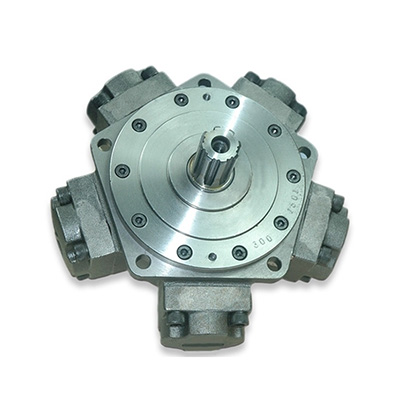Radial Piston Hydraulic Motor Troubleshooting
A radial piston hydraulic motor is a hydraulic motor that uses radially distributed plungers to rotate or reciprocate in the cylinder to transfer energy and thereby output torque and speed. It usually consists of a cylinder, plunger, distribution shaft, and seals. Radial piston hydraulic motors are widely used in various industrial fields, such as shipbuilding, mining, petroleum, and chemical industries. In these fields, it is used to drive various mechanical equipment, such as conveyor belts, presses, ship propellers, etc. Next, ATO will explain to you the knowledge of troubleshooting radial piston hydraulic motors.
First, we must understand the basic principles and structure of the hydraulic motor, including the functions and working methods of the plunger, cylinder, distribution shaft, and other components. When the pressure oil enters the bottom of the plunger in the cylinder through the window of the distribution shaft, the plunger extends outward and tightly resists the inner wall of the stator. Due to the eccentricity between the stator and the cylinder, when the oil pressure at the bottom of the plunger is p, the plunger diameter is d, and the angle between the force and the cylinder is In this way, the torques generated by multiple plungers work together to rotate the motor and output torque and speed.
Radial piston hydraulic motors have high torque and power density and are suitable for applications requiring high loads and precise control. However, its structure is complex, its manufacturing cost is high, and it requires precise maintenance and upkeep. In addition, due to the limitations of its working principle, the rotation speed of the radial piston hydraulic motor is relatively low.
Troubleshooting process
Check the fit between the valve shaft and the cylinder block. If the matching gap between the valve shaft and the cylinder block is too large, internal leakage may increase and the speed may decrease. At this time, you can try to reprocess or replace the valve shaft to restore the normal fit clearance.
Check the seal on the plunger for damage. If the sealing ring is damaged, the seal between the plunger and the cylinder hole will fail, which may lead to an increase in internal leakage and a decrease in rotational speed. At this time, the sealing ring needs to be replaced to restore normal sealing performance. When disassembling the hydraulic motor. The original assembly position and status should be recorded and marked to avoid being unable to restore it to its original state after repairs.
When inspecting and repairing the hydraulic motor, keep it clean to prevent impurities and dirt from entering the inside of the hydraulic motor. When replacing parts, use qualified parts and follow the correct steps for installation and adjustment.
Check that the pressure compensation gap mechanism on the plunger is working properly. If the pressure compensation gap mechanism fails, internal leakage may increase and the speed may decrease. At this time, the pressure compensation gap mechanism needs to be repaired or replaced to restore normal pressure compensation function.
When troubleshooting, various possible causes should be considered comprehensively and investigated one by one. If the specific cause cannot be determined, you can perform a disassembly inspection or ask professional technicians to diagnose and repair it.
Check whether the load is too large or the oil supply pressure of the pump is insufficient. If the load is too large or the oil supply pressure of the pump is insufficient, the speed of the hydraulic motor may decrease. At this time, you can try to increase the oil supply pressure of the pump or reduce the load to improve the speed of the hydraulic motor.
Check whether the coaxial of the motor output shaft is out of tolerance or the output shaft is too long. If the coaxial is out of tolerance or the output shaft is too long, it may cause the motor and rotor to retreat and rub against the back cover, causing the speed to drop. At this time, it is necessary to remove the motor, check the coaxial and length of the output shaft connected to the motor, and make necessary adjustments or replacements.
Check whether the length of the drain joint is appropriate. If the length of the drain joint is too long, it may rub against the rotor, causing the speed to drop. At this time, it is necessary to check the length of the drain joint and make appropriate adjustments. When troubleshooting, other measures and detection methods can also be taken according to the actual situation to diagnose and solve the problem quickly and accurately. It's important to note that specific troubleshooting steps may vary depending on the motor model, manufacturer, and type of fault.
When servicing and maintaining the hydraulic motor, follow the manufacturer's recommendations to replace worn parts such as filters and seals regularly. And keep the hydraulic system clean and functioning properly.

